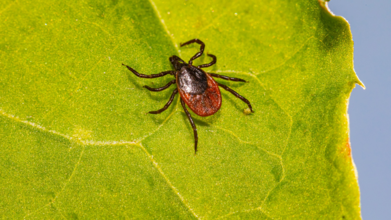- Health Conditions A-Z
- Health & Wellness
- Nutrition
- Fitness
- Health News
- Ayurveda
- Videos
- Medicine A-Z
- Parenting
- Web Stories
Nepal Achieves Rubella Elimination By WHO, Know All About It Here

Credits: Canva
Nepal has officially been verified for rubella elimination. This makes it a milestone in global public health and putting the country among six in the World Health Organization’s (WHO) South-East Asia Region to achieve this feat.
The announcement was made at the 10th meeting of the Regional Verification Commission for Measles & Rubella Elimination, held from July 22 to 24, 2025, where progress across all 10 member states was reviewed.
The WHO has set 2026 as the target year to eliminate both measles and rubella from the region, a goal it described as ambitious but attainable if countries sustain momentum and strengthen cooperation.
Nepal’s Path to Elimination
Nepal’s achievement was the result of decades of determined efforts, robust immunization campaigns, and innovative community-level outreach.
The country introduced the rubella-containing vaccine in 2012 through a nationwide campaign that reached children between nine months and 15 years of age.
In 2016, a second dose was added to the routine immunization schedule, further boosting protection.
Regular follow-up campaigns, conducted every four years in 2012, 2016, 2020, and 2024, helped plug immunization gaps, even during times of crisis.
For instance, vaccination drives continued during the devastating earthquakes of 2015 and 2023, ensuring that immunization momentum was not lost.
By 2024, Nepal had achieved more than 95% coverage with at least one dose of the rubella vaccine, creating herd immunity levels strong enough to halt the spread of the virus.
The country also introduced innovative strategies, such as an annual “Immunization Month,” mobile outreach programs to reach missed children, and the declaration of “fully immunized districts” to hold local leaders accountable.
On the surveillance front, Nepal has been equally rigorous. Laboratory-supported rubella case surveillance began as early as 2004, while congenital rubella syndrome (CRS) surveillance started in 2014.
These systems consistently exceeded elimination targets. Most recently, Nepal introduced a robust laboratory testing algorithm, the first of its kind in the region—that allows more accurate detection of true rubella cases.
What Is Rubella?
Rubella, often called “German measles,” is a viral infection that spreads through droplets from coughs and sneezes. While symptoms are usually mild in children and adults, fever, rash, and swollen lymph nodes, the disease can have devastating consequences during pregnancy. Infection in expectant mothers can cause miscarriage, stillbirth, or congenital rubella syndrome, a condition leading to lifelong disabilities including hearing and vision impairment, heart defects, and developmental delays.
According to WHO, before the widespread introduction of vaccines, rubella was a leading cause of preventable congenital disabilities worldwide. Elimination is defined as the absence of endemic transmission for at least 12 months, supported by a high-performing surveillance system.
Regional and Global Push
The South-East Asia Region has made significant strides, but challenges remain. Six countries, including Nepal, have eliminated rubella, while four have eliminated measles. However, WHO cautioned that setbacks caused by global geopolitical crises, funding shortages, and disruptions during the COVID-19 pandemic have slowed progress.
At the regional commission meeting, experts urged governments and international partners to redouble efforts, ensure sustainable funding, and strengthen collaboration if the 2026 elimination target is to be met.
“The region has shown what is possible with political will and community participation,” the Commission said in a statement, commending Nepal for its achievement. “But urgent, accelerated actions are needed to protect these gains and prevent resurgence.”
'Stop All Use Of Magnesium Gummies For Kids - Says UK Government

Due to the massive popularity of magnesium and its potential health benefits, many parents had incorporated it into their kid’s consumption as well. However, the UK government has asked for parents and caregivers to immediately stop giving Nutrition Ignition Kids Magnesium Glycinate Gummies to children.
The Medicines and Healthcare products Regulatory Agency (MHRA) found an unlisted medicine, melatonin, in the product. It's important to safely throw away any gummies you have left and to talk to a doctor if you're worried about your child's health.
Why Do You Need To Stop Giving These Supplements?
The MHRA discovered that the gummies, sold online as a food supplement, contain melatonin, even though it is not on the label. Each gummy has 1.5 to 1.7 milligrams of melatonin. This is a lot, especially since the recommended starting dose for children who need melatonin is only 1 milligram. The gummies were marketed for "calm, focus, and digestion" for kids ages four and older, but they contain a powerful, unlisted drug.
What Are The Potential Side Effects of The Magnesium Supplements?
Taking too much melatonin can cause side effects like drowsiness, headaches, dizziness, and nausea. While these issues are not expected to cause lasting harm and the body typically clears the drug within 12 hours, the MHRA has already removed the product from online stores. Dr. Alison Cave, the MHRA's Chief Safety Officer, also pointed out that other possible side effects from melatonin in children can be hyperactivity and stomach pain.
What Is The Safest Way To Dispose The Supplements?
It is very important that you do not throw these gummies in the regular trash. Instead, you should store them securely in a container that children cannot open and keep them out of their reach. When you can, take the gummies to any local pharmacy for safe disposal. If you think your child had a bad reaction to the product, stop giving it to them right away and talk to a doctor. You can also report the side effect to the MHRA's Yellow Card scheme.
Valley Fever Cases Rise In West Coast, California Health Officials Warn Residents To Stay Alert, Know Symptoms

(Credit - Canva)
Valley Fever California: As cases of Valley fever increase in California, California Department of Public Health (CDPH) have put out a warning to ensure people stay safe. With more than 5,500 cases of valley fever in the first six months, the current number of cases being 6,761, health officials have detailed things California residents or visitors should know.
The highest rates of Valley fever are in the southern San Joaquin Valley, but cases are increasing in other parts of the Central Valley and the Central Coast. According to CDPH Director Dr. Erica Pan, it's crucial for residents, visitors, and healthcare providers to be aware of the signs and symptoms for early detection.
What is Valley Fever?
According to the Centre of Disease Control And Prevention, Valley fever (coccidioidomycosis) is a lung infection caused by the fungus Coccidioides, which lives in the soil. This fungus is found primarily in the Pacific Northwest and southwestern United States, as well as parts of Mexico, Central America, and South America. People become infected by breathing in the fungal spores.
It's important to note that Valley fever is not contagious; it cannot be spread from person to person or from animals to people. While some people who are exposed to the spores never get sick, others develop symptoms of a typical lung infection, such as a cough and fever.
Also Read: First Rocky Mountain Spotted Fever Case Confirmed In Quebec
The disease can be challenging to diagnose because its symptoms are similar to those of other viral or bacterial pneumonias, leading to potential misdiagnosis, ineffective treatments, or delays in getting the proper care. Early treatment with antifungal medication can be lifesaving for those who need it.

What Are The Symptoms of Valley Fever?
The illness can cause symptoms that resemble the flu or COVID-19, and it can also lead to serious lung infections like pneumonia. The fungus is often stirred up in late summer and fall, and people typically get sick one to three weeks after breathing it in. The symptoms of Valley fever can vary greatly from person to person. While some individuals have no symptoms at all, others may experience:
- Fatigue (tiredness)
- Cough
- Fever and headache
- Shortness of breath
- Night sweats
- Muscle aches or joint pain
- Rash on the upper body or legs
Is Valley Fever A Serious Health Concern?
In some cases, Valley fever can lead to more serious health issues. About 5 to 10% of people who contract the infection will develop long-term problems in their lungs.
In a very small percentage of cases (about 1%), the infection can spread from the lungs to other parts of the body. This is known as a disseminated infection and can affect the skin, bones, joints, or even the brain, leading to a condition called meningitis. Certain groups of people are at a higher risk for developing these more severe forms of the illness.
How Is Valley Fever Treated?
Many people who get Valley fever get better on their own without needing any special medicine. Their symptoms usually go away in a few weeks or months. However, some people need medical care to feel better or to keep the infection from getting worse.
For very bad infections or cases where the fungus has spread to other parts of the body, doctors must use antifungal medication. These people may also need to stay in the hospital.
How To Prevent Valley Fever?
Valley fever is not contagious, so you can't catch it from another person or pet. You and your pets can only get it by breathing in dust that contains the fungus. It can be hard to completely prevent Valley fever, but you can take steps to lower your risk:
- Stay inside on days when it's windy and dusty. Keep your windows and doors shut.
- Keep your car windows closed when driving through dusty spots and use the air conditioning on the recirculated air setting if you can.
- Spray water on soil or dirt before you dig to keep dust from flying into the air.
- If you have to be outside in a dusty area, wear a properly fitted N95 mask.
First Rocky Mountain Spotted Fever Case Confirmed In Quebec

Credits: Canva
First case of Rocky Mountain spotted fever or RMSF, which is a tick-borne disease has been confirmed in Quebec. The case has been confirmed by the doctor on Monday and the patient, infected in the Eastern Townships is said to have responded well with the treatment.
As per Dr Alex Carignan, an infectious disease microbiology and professor at the Faculty of Medicine and Health Sciences at the University of Sherbrooke, since the temperatures are rising and warming up, more of such cases could be infected. He told Le Devoir, "It is worrying because it is an infection with significant severity."
What Is Rocky Mountain Spotted Fever?
As per the Centers for Disease Control and Prevention (CDC), RMSF is a bacterial disease spread through the bite of infected tick. As per the National Institute of Health (NIH), US, it is an acute febrile tick-borne illness caused by Rickettsia rickettsii, and is most severe and most common form of the rickettsial infections in North America.
The disease can be treated with antibiotics, however if not treated in time, it could be fatal too. The NIH notes that the R. rickettsia transmits into human hosts by the bite of an infected tick. Humans are not a natural reservoir of disease. The Rickettsia does not harm the tick.
Common Symptoms Of Rocky Mountain Spotted Fever:
- High fever
- Headache
- Muscle Pain
- Stomach Pain
- Lack of appetite
- Skin lesion in forms of red spots
The symptoms appear within few hours of being bitten.
Is Rocky Mountain Spotted Fever Contagious? How Does It Spread?
CDC notes that in the US, the most common source is the American dog tick or the Dermacentor variabilis. In parts of southwestern United States and Mexico, it is also spread by the Brown dog tick or the Rhipicephalus sanguineus. There is another source the Rocky Mountain wood tick or the Dermacentor andersoni, which is also a significant source of RMSF.
In terms of Canada, Dr Carignan notes that the tick species has been present in Quebec for several years now. "We expected to see the first cases appear within five to ten years. But it's finally now. So, we have to adapt accordingly," he told Le Devoir.
Is This Same As The Lyme Disease?
No, it is not. Unlike the black-legged tick, the American dog tick does not transmit Lyme disease. In addition to affecting humans, the Rocky Mountain spotted fever can also affect animals.
Prevention
Dr Carignan notes: "Taking a shower fairly quickly can also help dislodge any ticks that my be settling in."
The doctor advises that people must wear long clothing, use insect repellent, and check for ticks after they have been outdoors.
However, there is no vaccine to prevent RMSF, notes the CDC. The most common time for such cases, notes the CDC is between April to September.
The diagnosis is not too complicated. Your healthcare provider may order blood tests to look for evidence of RMSF, the results, however, can take a few weeks.
It is treated with antibiotic doxycycline, which, notes the CDC, has been approved for all ages. The NIH, US, notes that without prompt antibiotic treatments, the mortality rates could go as high as 20 to 30% in the case of RMSF.
© 2024 Bennett, Coleman & Company Limited

